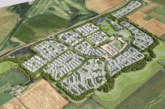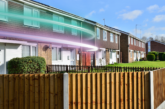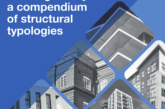
Martyn Walley, National Technical Manager at Aico, discusses the latest advances in smoke alarm technology for councils and housing associations.
Advanced technology is seeping into all electronic devices. A domestic smoke alarm still performs its fundamental life saving task of detecting smoke, but now comes with a host of added features and functions designed to enhance the safety of tenants, while adding flexibility into a system. However, such features are only beneficial if you truly understand their purpose, as well as how to fit, apply and use them.
For some, the array of different smoke alarm features and functionality can seem overwhelming. Gone are the days when specifiers simply had to decide which alarm sensor type — ionisation, optical or heat — to use where. Now multi sensors have been added to the mix, along with accessories such as alarm controllers and interfaces to third party life safety systems. Contractors need to decide how to interconnect these alarms and devices, be it hardwired or wire free.
Manufacturers also have an important role to play. Firstly, they must ensure the technology incorporated into smoke alarms is easy to understand and to install and, just as importantly, easy to use. Secondly, they should provide support, training and product information in multiple formats, so that specifiers and contractors can pick the one that fits best with their work schedule.
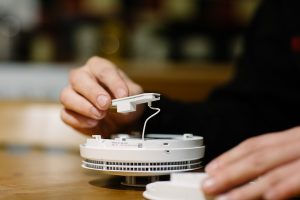
Technology should be ‘Child’s Play’
Wire-free alarm interconnection has arguably had the biggest impact in the domestic smoke alarm sector. BS 5839-6 and Building Regulations require fire alarms to be interconnected. Hardwiring alarms together is effective in a new-build, but creates significant disruption and cosmetic damage in existing properties. Instead this can be achieved using Radio Frequency (RF) signals.
As you would expect, installing alarms with wireless interconnection is quick and simple, but only if there is a straightforward way to get these alarms to ‘talk’ to each other via the RF signals. Ideally this should be achieved at the push of a button on the alarm, as is the case with our RadioLINK+ RF system.
With alarm interconnection made easy, quick and cost-effective, systems are growing in size. System expansion brings its own set of issues, including how best to control them. With a large system it takes longer to test individual alarms and identify which alarm has triggered. Test, Silence and Locate switches are an important consideration here, so make sure the system used offers one in its range. It enables the resident to test and silence all the alarms on the system from the one conveniently placed switch, as well as allowing for quick identification of the unit that has caused the alarm.
RF technology has resulted in other benefits, most notably the ability to interconnect a smoke alarm system to other life saving devices and systems, including carbon monoxide (CO) alarms, telecare/warden call systems, sprinkler systems and BS5839 Part 1 panel based fire alarm systems. This sounds like it has the potential to be complicated, so what should specifiers be looking for to ensure it isn’t?
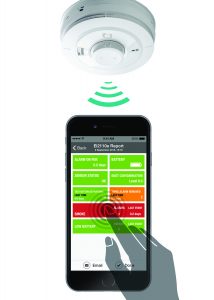
Traditional relays make it possible to link domestic alarms to such devices but as they do not contain the software and multiple inputs/outputs that are needed specifically for these applications your options are limited. Instead look for a smoke alarm system that provides a dedicated device specifically designed and tested for this exact purpose, such as Aico’s Ei414 Fire/CO Alarm Interface. Devices such as these are not only reliable and easy to install but often come with added features, such as a ‘Test’ setting to test the entire system including a signal being transmitted to the third party system.
Data extraction
One of the newest technologies to be launched is data extraction from alarms. Data extraction technology has genuine benefits for social housing providers, including information on battery back-up or battery life, alarm sensor status, number of times tested and removed and any alarm activation with details of when it occurred.
With the latest generation of smoke and CO alarms, data can be extracted onsite. It does not have to be complex — for example, Aico’s AudioLINK allows for data to be extracted via the alarm’s sounder using a free AudioLINK App. The App turns the data into a simple graphics based report colour coded to identify the urgency of any issue and, in some cases, what action to take next.
Training
Regardless of how easy to use smoke alarm manufacturers make their technology, training is always beneficial. The training should encompass standards and regulations, alarm system design and installation, through to specific technologies.
However, time taken off to learn means time away from work so the training has to be delivered in a suitable way. This could mean modular, bite sized training so it can be taken over a longer period of time. Deliverability of that training is also a consideration. Online training may be an option, but it’s limited and not very engaging; nothing can really beat face-to-face, hands on training sessions. Aico offers Mobile Training & Demonstration Units where they can deliver detailed smoke and carbon monoxide (CO) alarm product and technology information, as well as CPD accredited training to a council or housing association’s premises.


